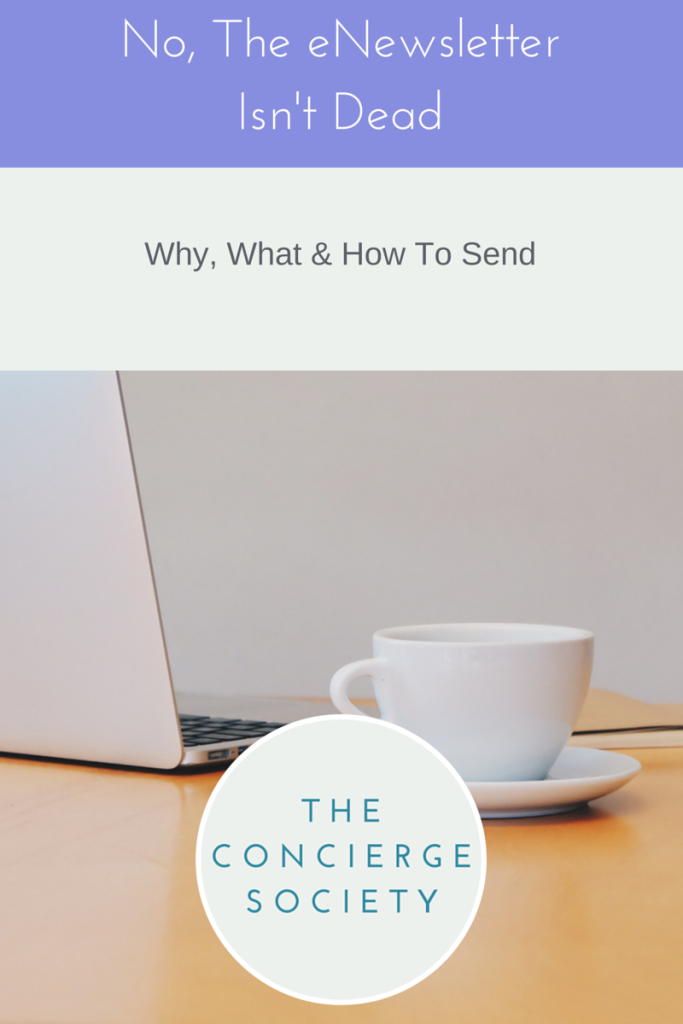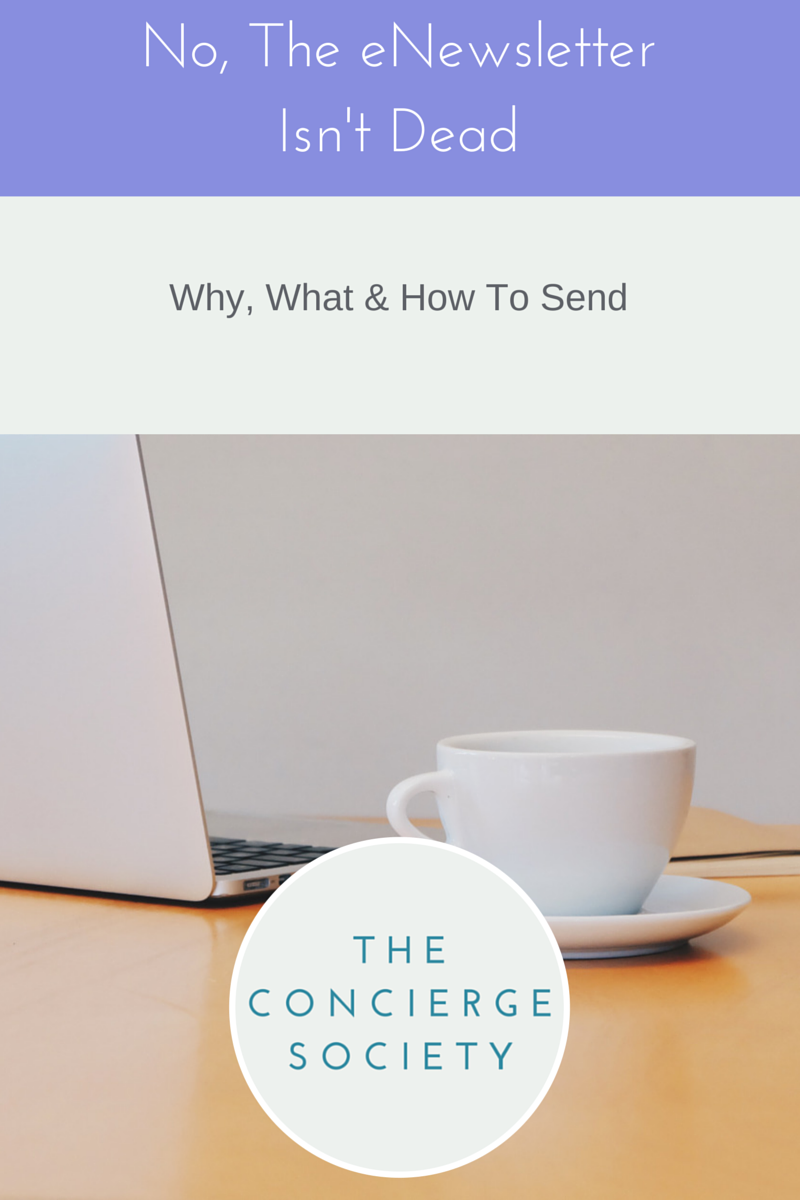No, The eNewsletter Isn’t Dead


Right from the very start of my business I had an e-newsletter. All my business reading and research reinforced how important it was to have regular contact with my current and potential clients. In the beginning I was very inconsistent with my newsletters. I was nervous and didn’t want to pester my mailing list. However, when I started taking notice of the results I was getting, I realised that with virtually every newsletter I sent, I got multiple replies, and at least one new client or task, as a direct result of the newsletter. I also noticed that in conversations with people at later dates, they would mention items that were in my newsletter. I couldn’t believe it!
Now, even with the advent of social media and the many avenues of free marketing available to us, I still find that my newsletter has the greatest immediate impact. Plus, I can see who is reading it and what they are interested in by what they are clicking.
{**Free Template At The End Of This Post**}
So, what do you put in your newsletter?
One of the best ways to start planning your newsletter is to take notice of what you like in a newsletter. Which newsletters do you actually open and read? Which newsletters do you save or refer back to? What is it about them that appeals to you? Images? Articles? Discounts? Downloads? You of course have to keep in mind your ideal client, but from a marketing standpoint, there is a reason you are reading these newsletters, and there is bound to be something you can apply to your own. I know that for me personally, a visually appealing newsletter is particularly attractive.
What’s worked for me:
List the tasks you’ve done – as I’m sure you are aware, explaining what we do can be tricky. Listing some of the recent tasks you’ve undertaken, the normal, the mundane and the quirky, really helps current and potential clients reflect on how you can help them.
Include a case study – as well as having case studies on your website, feature one in your newsletter, and include the relevant web page. Clients love to know about real people, why they started using you, and what they use you for. It’s ok if the people in these case studies remain anonymous, as long as you give them some characteristics so people can relate to them.
Images help – especially with the growth of social media, images are very appealing to people. As they say, a picture is worth 1,000 words, and if your readers are quickly scrolling through your newsletter, the images you use can really capture their attention and encourage them to read on. Plus you can use them on your website and across all your social media platforms.
Include a special offer – make it easy for people to buy from you. Include a special offer or make a feature of one of your packages or programs. Link directly to your website and where they can purchase, whether an online store or a form they can complete. Remember, make it easy.
Always have a call to action – if you don’t feel you can provide a special offer, always, always include some form of call to action. Contact us, book now, download this, email me here – always give them something to do, encourage the next step. If you don’t ask for it, it is unlikely your readers will go out of their way to get in touch unless it’s absolutely imperative.
How often should you send out a newsletter?
I’ve heard many and varying answers to this question. However, the one constant is that you need to be consistent. Weekly, fortnightly, monthly – all of these are fine, as long as you strive for consistency. Some of the biggest names in online marketing swear by weekly newsletters. Don’t be afraid of sending weekly, just ensure you create a newsletter that is conducive to this ie. a weekly newsletter would likely be much shorter than a monthly newsletter. I have moved between monthly and weekly newsletters, as well as varying the type of content I include and the layout I use. It is all about testing your readers and seeing how they respond.
How do I send my newsletter?
I am a big fan of MailChimp and highly recommend it. Especially as it is free for up to 12,000 emails and 2,000 subscribers. It’s what I use for both of my businesses.
Others also highly recommend Aweber, or you can simply send it from your own email client (remembering that there are usually restrictions on how many emails you can send at a time).
So, what next?
Themes are a great way to focus and generate ideas. I would suggest planning out a theme for each newsletter for the next 6-12 months. Before you overwhelm yourself, simply write each month at the top of a column in Excel, or use our downloadable marketing calendar template, and then immediately underneath it write a one to two word theme. Valentine’s Day, Mother’s Day, Easter, Back To School, Grocery Shopping, Organisation…… The great thing about this is that you can start to flow this theme into all of your marketing activities. Start with a newsletter, and then develop a whole marketing calendar, simply based on a monthly theme.
As in all endeavours, taking the first step is often the hardest, but no rewards can be achieved without it. Go forth!
Let us know when you’ve completed your Marketing Calendar or identified your newsletter themes by commenting below! Do you have any other tips, ideas or a success story? I’d love to hear it!
Here’s a printable Marketing Calendar Template for those of you who like to handwrite and have things in font of you! Download here.


Abbie Allen is the founder of The Concierge Society, as well as Lifestyle Elements and le Porter. She started Lifestyle Elements in 2004 at the age of 23 and now operates internationally from her head office in Adelaide, South Australia. She was the 2014 Institute of Concierge and Lifestyle Managers Association Golden Key Award winner, as well as a finalist in the South Australia Telstra Business Women’s Awards in 2012. She works with her husband Tim, and they have three daughters. If you handed Abbie a brand new book, a glass of red wine and some chocolate, plus the time to enjoy it, you would have made her day! Have you joined our free private community? Click here now!
